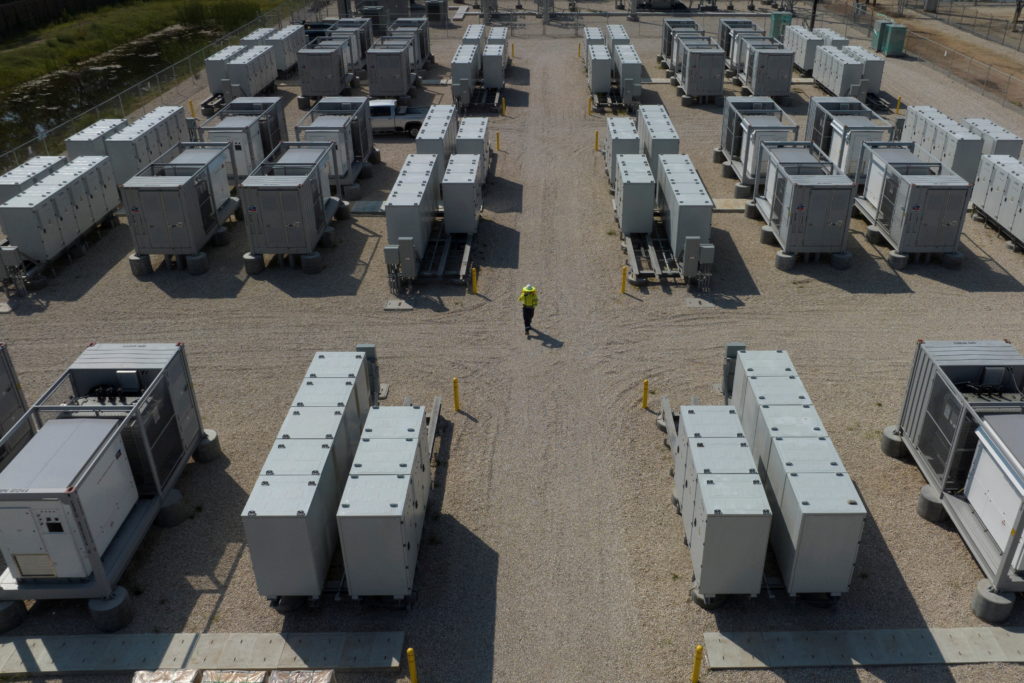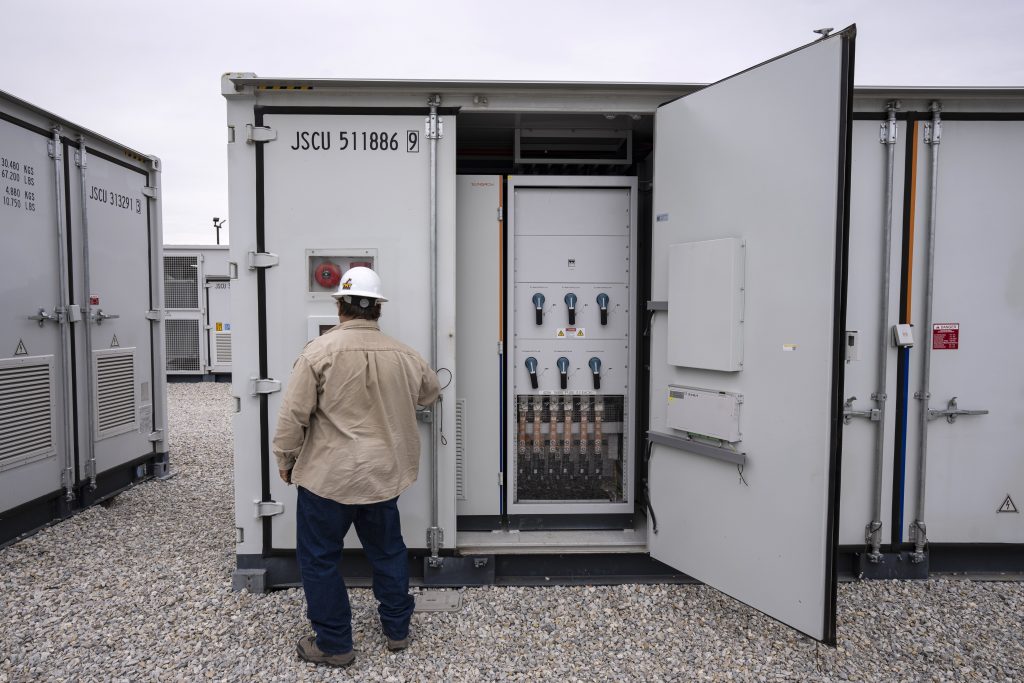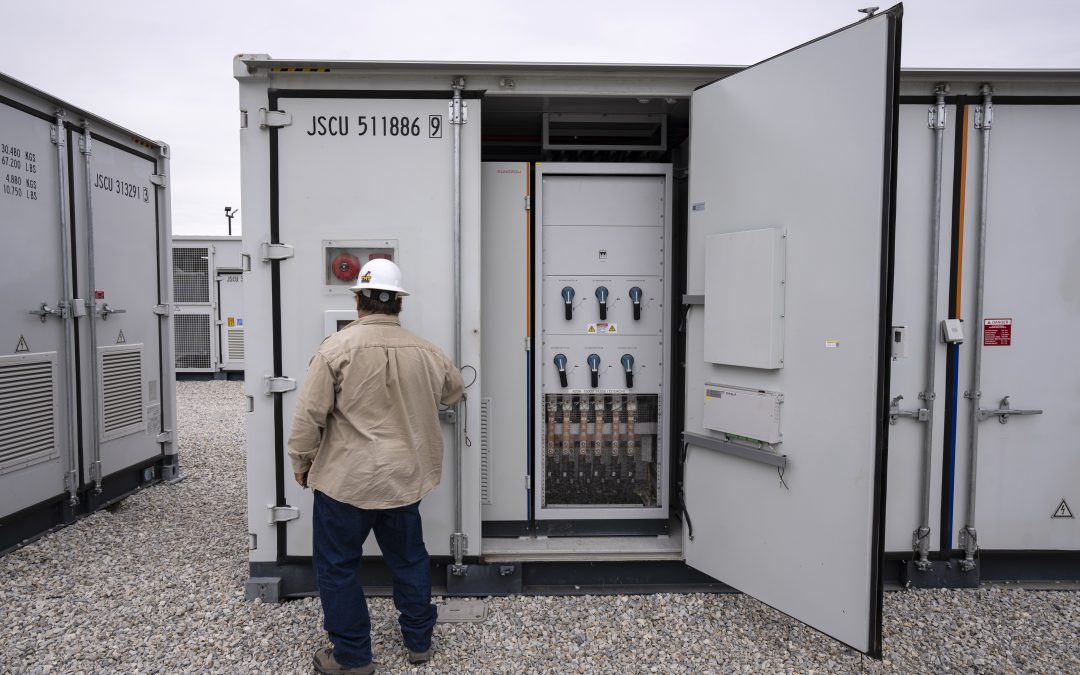The Energy Department recently made a substantial investment of $325 million in new battery types for the storage of renewable energy. This funding will be allocated to 15 projects across 17 states and the Red Lake Nation in Minnesota. The objective behind this initiative is to develop long-duration battery storage options that surpass the typical four-hour capacity of lithium-ion batteries. By doing so, the aim is to enhance the reliability and affordability of renewable energy, while also safeguarding communities from power outages. Among the funded projects are the implementation of batteries at closing coal plants, battery systems for medical centers confronted with potential power failures, and the utilization of retired electric vehicle batteries for backup power. The significance of these announced projects lies in their ability to demonstrate the effectiveness of these technologies on a large scale, assist utilities in long-term storage planning, and ultimately reduce costs. The development of more cost-effective batteries will pave the way for the widespread adoption of renewable energy storage solutions.
Overview of the $325 million investment
The Energy Department has recently announced an investment of $325 million in new battery types for storing renewable energy. The goal of this investment is to develop long-duration battery storage options that can last longer than the typical four hours provided by lithium-ion batteries. This investment is aimed at making renewable energy more reliable and affordable, as well as protecting communities from blackouts.
The funds will be distributed among 15 projects in 17 states and the Red Lake Nation in Minnesota. These projects cover a wide range of applications and technologies, showcasing the diverse and innovative approaches to long-duration battery storage.
Importance of long-duration battery storage
The typical lifespan of lithium-ion batteries is around 10-15 years, which is already quite impressive. However, there is a growing need for even longer-lasting storage solutions. Long-duration battery storage systems can provide energy for extended periods, allowing for better management of intermittent renewable energy sources like solar and wind power.
One of the key benefits of long-duration battery storage is its role in making renewable energy more reliable. By storing excess energy during periods of high generation and releasing it during times of low or no generation, battery storage helps to bridge the gap and ensure a continuous and consistent supply of electricity.
Projects funded under the investment
A variety of projects have been funded under the $325 million investment, each exploring different aspects of long-duration battery storage.
One project involves the deployment of batteries at closing coal plants. This initiative aims to repurpose these plants and use the infrastructure for battery storage, allowing for a seamless transition from fossil fuels to renewable energy sources. This not only helps to accelerate the clean energy transition but also provides economic opportunities for communities affected by plant closures.
Another project focuses on installing battery systems in medical centers that are at risk of power outages. These battery systems act as backup power sources, ensuring that life-saving equipment and critical operations can continue uninterrupted during emergencies. This enhances the resilience of healthcare facilities and safeguards the well-being of patients in these centers.
In addition, retired electric vehicle (EV) batteries are being utilized in another project to provide back-up power. These batteries, which may no longer be suitable for use in EVs, can still serve a useful purpose by storing excess energy and supplying it when needed. This project not only extends the lifespan of these batteries but also contributes to the circular economy by repurposing them for a new application.
The scale of the projects funded under this investment is significant, with 15 projects spread across 17 states and the Red Lake Nation. This ensures a wide reach and impact, benefiting various communities and regions across the country.
Impact on the renewable energy industry
The investment in long-duration battery storage projects has significant implications for the renewable energy industry.
Firstly, it allows for improved planning for long-term storage. By demonstrating the viability and effectiveness of different storage technologies and approaches, these projects provide valuable data and insights to help utilities and policymakers make informed decisions regarding the integration of long-duration battery storage into the energy grid.
Secondly, the investment helps to reduce the costs associated with renewable energy storage. By supporting research and development in this field, the Energy Department is driving innovation and driving down the costs of long-duration battery technologies. This, in turn, makes renewable energy storage more economically feasible and sets the stage for increased installations in the future.
Furthermore, the investment in battery storage projects is expected to boost the installation of renewable energy storage on a larger scale. As long-duration storage options become more readily available and affordable, utilities and homeowners will be able to store excess energy and rely on it during times of low or no generation. This not only increases the reliability of renewable energy but also paves the way for a more decentralized and resilient energy grid.
Lastly, the investment in long-duration battery storage projects will contribute to the advancement of renewable energy technologies. By encouraging research and development in this field, there is the potential for breakthroughs and innovations in battery storage. This could lead to the development of even better and more efficient storage technologies, further enhancing the performance and capabilities of renewable energy systems.
Technological advancements in battery storage
The investment in long-duration battery storage projects is driving technological advancements in this field.
One of the key areas of exploration is the development of new battery types. While lithium-ion batteries have dominated the market, there is ongoing research into alternative battery chemistries that can offer longer durations and better performance. By investing in these advancements, the Energy Department is pushing the boundaries of battery technology and broadening the options available for renewable energy storage.
In addition to exploring new battery types, there is also a focus on improving the durability and efficiency of battery storage systems. This involves finding ways to enhance the lifespan of batteries, improve their energy storage and discharge capabilities, and optimize their overall performance. These improvements will not only extend the lifespan of batteries but also increase their reliability and effectiveness in storing renewable energy.
Furthermore, the integration of renewable energy systems with battery storage is an important area of development. By integrating these systems, excess energy generated by renewable sources can be stored and utilized when needed. This integration allows for better management of intermittent renewable energy generation and provides a more stable and reliable energy supply.
Overall, the technological advancements in battery storage enabled by this investment will contribute to the continued improvement and advancement of renewable energy technologies.
Collaboration between institutions and states
The success of the long-duration battery storage projects funded under this investment is built on collaboration between various institutions and states.
Research institutions play a crucial role in this collaboration, as they are responsible for developing and testing new battery technologies and storage approaches. By working together and sharing knowledge and expertise, these institutions are able to make significant advancements and breakthroughs in battery storage. The collaboration also allows for the pooling of resources, enabling research institutions to tackle complex challenges and accelerate progress.
State governments are also actively involved in supporting and promoting long-duration battery storage projects. By providing funding and regulatory support, states create an environment conducive to the development and implementation of these projects. This collaboration facilitates the sharing of best practices and lessons learned, allowing for the widespread adoption of successful approaches and technologies.
The collaboration between institutions and states is a vital aspect of building a sustainable energy future. By combining efforts and resources, these stakeholders can work towards a common goal of enhancing renewable energy storage and reducing reliance on fossil fuels.
Benefits for communities and the environment
The investment in long-duration battery storage projects brings about numerous benefits for communities and the environment.
One of the primary benefits is the protection from power outages. By installing battery storage systems at critical facilities like medical centers, these institutions can continue to operate even during blackouts. This ensures that patients receive the necessary care and that essential services are not disrupted. Additionally, battery storage systems can provide backup power for residential homes, providing peace of mind and security during times of grid instability.
Furthermore, the investment in long-duration battery storage helps to increase the affordability of renewable energy. By storing excess energy generated during peak periods, consumers can reduce their dependence on the grid and rely more on their own renewable energy generation. This can lead to significant cost savings on energy bills and make renewable energy more accessible to a wider range of households.
Another significant benefit is the reduced reliance on fossil fuels. By investing in long-duration battery storage, the Energy Department is promoting the integration of renewable energy into the grid and reducing the need for fossil fuel-based power generation. This helps to decrease greenhouse gas emissions and mitigate the impacts of climate change.
Lastly, the investment in battery storage projects has a positive impact on local economies. The development and implementation of these projects create job opportunities and stimulate economic growth in the states and communities involved. This not only benefits the individuals directly employed in the projects but also has a ripple effect on the surrounding businesses and industries.
Challenges and risks in battery storage
While the investment in long-duration battery storage projects shows great promise, there are also challenges and risks that need to be addressed.
One of the concerns is the environmental impact of battery production and disposal. The manufacturing of batteries, especially those containing rare and precious materials, can have detrimental effects on the environment. Additionally, the disposal of batteries at the end of their lifespan poses challenges in terms of proper recycling and waste management. Addressing these environmental concerns will be crucial to ensuring the sustainability of battery storage technologies.
Safety is another important consideration. Batteries, especially those with high energy densities, can pose a fire risk if not properly handled and maintained. Implementing strict safety protocols and ensuring the training of personnel is necessary to mitigate these risks and ensure the safe operation of battery storage systems.
Integration with existing energy infrastructure is another challenge that needs to be overcome. The energy grid was originally designed for centralized, large-scale power generation, and incorporating decentralized renewable energy sources and battery storage into the grid requires careful planning and coordination. This integration involves upgrading and modifying existing infrastructure to accommodate the unique requirements of renewable energy and battery storage systems.
Furthermore, regulatory and policy hurdles need to be addressed to enable the widespread adoption of long-duration battery storage. Clear guidelines and standards are necessary to facilitate the development and deployment of these technologies. Policies that incentivize the implementation of battery storage systems and promote the integration of renewable energy into the grid are essential to driving progress in this area.

Future prospects and potential developments
The $325 million investment in long-duration battery storage projects lays the foundation for a sustainable energy future, but there are still many prospects and potential developments on the horizon.
Continued advancements in battery technology are expected, with ongoing research and development driving innovation. As new battery types and chemistries are explored, the capabilities and longevity of energy storage systems will continue to improve. This will lead to even longer durations, enhanced performance, and greater efficiency in storing renewable energy.
As renewable energy adoption continues to grow, there will be an increased need for energy storage on a larger scale. This will drive the expansion of renewable energy installations and the integration of long-duration battery storage into smart grids. Smart grids enable intelligent energy management, allowing for the optimization of energy generation, consumption, and storage. The integration of energy storage into smart grids will help to ensure a reliable and balanced energy supply, benefitting both utilities and consumers.
Innovation in battery storage technologies will be further driven by research and funding. The investment in long-duration battery storage projects demonstrates the commitment to advancing this field and supports further research and initiatives. With ongoing support and investment, it is likely that new breakthroughs and innovations will emerge, propelling the renewable energy industry even further.
Conclusion
The $325 million investment in long-duration battery storage projects marks a significant milestone in the quest for a more sustainable energy future. The goal of developing battery storage options that can last longer than the typical lithium-ion batteries will enhance the reliability and affordability of renewable energy.
The projects funded under this investment cover a range of applications and technologies, showcasing the diverse approaches to long-duration battery storage. The deployment of batteries at closing coal plants, battery systems for medical centers, and the utilization of retired EV batteries all contribute to the overall goal of integrating renewable energy storage into the grid.
The impact of these projects on the renewable energy industry is substantial. Improved planning, cost reduction, increased installation of renewable energy storage, and advancements in technology are just a few of the positive outcomes expected. Collaborations between institutions and states play a vital role in driving progress and achieving a sustainable energy future.
The benefits of long-duration battery storage extend to communities and the environment. Protection from power outages, increased affordability of renewable energy, reduced reliance on fossil fuels, and positive economic impacts are among the advantages. However, challenges such as environmental concerns, safety considerations, infrastructure integration, and regulatory hurdles need to be addressed.
Looking ahead, the future prospects and potential developments are promising. Continued advancements in battery technology, expansion of renewable energy adoption, integration into smart grids, and innovation driven by research and funding will shape the renewable energy industry. With ongoing support and a commitment to research, a more sustainable energy future is within reach. It is essential to support further research and initiatives to continue the momentum and drive towards a cleaner and more efficient energy system.










